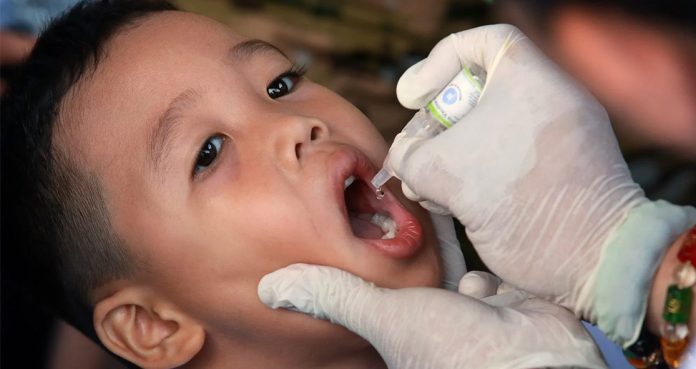On Thursday, public health officials of the Philippines declared a polio outbreak, which was declared polio-free 19 years ago by the World Health Organization (WHO).
The nation’s health department said the potentially deadly disease was re-emerging after the officials reported polio in a 3-year-old girl in Lanaodel Sur, with one suspect awaiting for confirmation.
The officials said the polio virus has been detected in waterways in southern Davao, Mindanao, and sewage in Manila. The U.S. Centers for Disease Control and Prevention (CDC) and the Japan National Institute for Infectious Diseases verified the samples.
The WHO has expressed deep concerns at the re-emergence of the disease in the nation, while UNICEF has described it as “deeply disconcerting.”
UNICEF Philippines Representative Oyun Dendevnorov said, “As long as one single child remains infected, children across the country and even beyond are at risk of contracting polio.”
According to the WHO, “A global campaign to eradicate polio was launched in 1998 and cases due to the wild polio virus have decreased by more than 99% since then, from an estimated 350,000 cases to 33 reported cases in 2018.” However, the disease still persists in Afghanistan and Pakistan.
In a statement, Philippines Health Secretary Dr. Francisco Duque III said, “We strongly urge parents, health workers and local governments to fully participate in the synchronized polio vaccination. It is the only way to stop the polio outbreak and to protect your child against this paralyzing disease.”
The WHO said, “Polio is an infectious disease which spreads rapidly. It can cause paralysis and, on rare occasions, can be fatal. There is no cure for polio — it can only be prevented with multiple doses of polio vaccines.”
Dr. Duque added, “Aside from immunization, we remind the public to practice good personal hygiene, wash their hands regularly, use toilets, drink safe water, and cook food thoroughly.”
“If a population is not sufficiently immunized, the weakened virus can continue to circulate. The longer it is allowed to survive, the more changes it undergoes. In rare instances, the virus can change to a vaccine-derived poliovirus (VDPV), a form that has regained the ability to cause paralysis,” said the WHO.
The WHO further added, “Poorly conducted immunization activities, when too few children have received the required three doses of polio vaccine, leave them susceptible to poliovirus, either from vaccine-derived or wild polioviruses. Full immunization protects them from both forms of the virus.”
According to the Polio Global Eradication, in 2019, 78 cases of the wild virus have been reported across the globe, with 80 cases of the vaccine-derived polio, excluding the Philippines case.






















